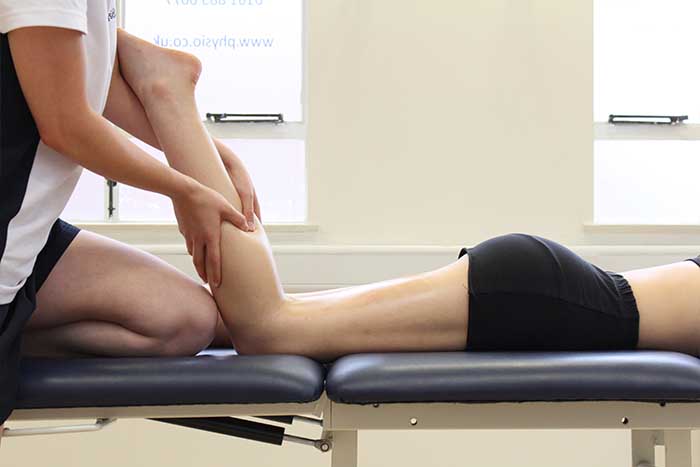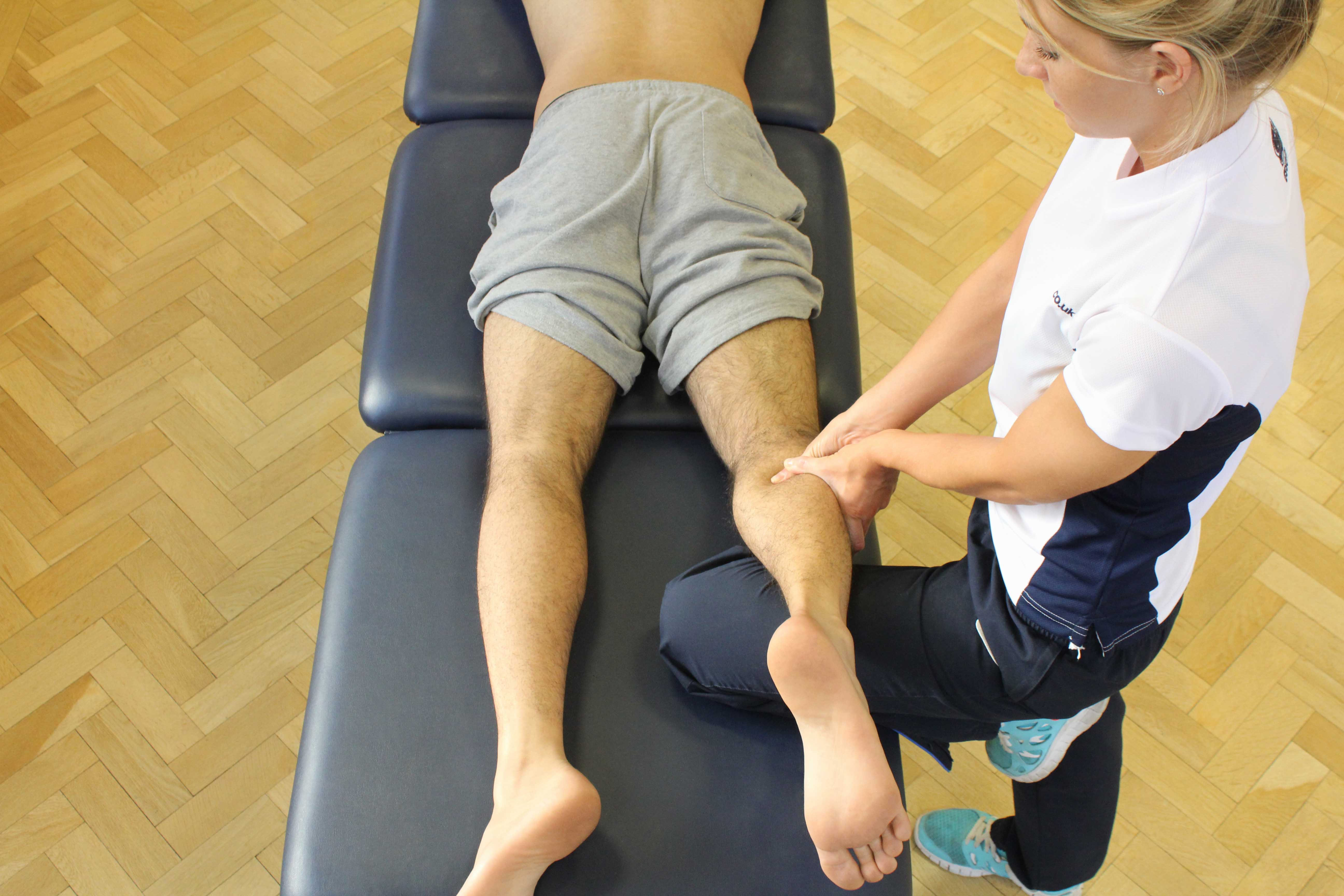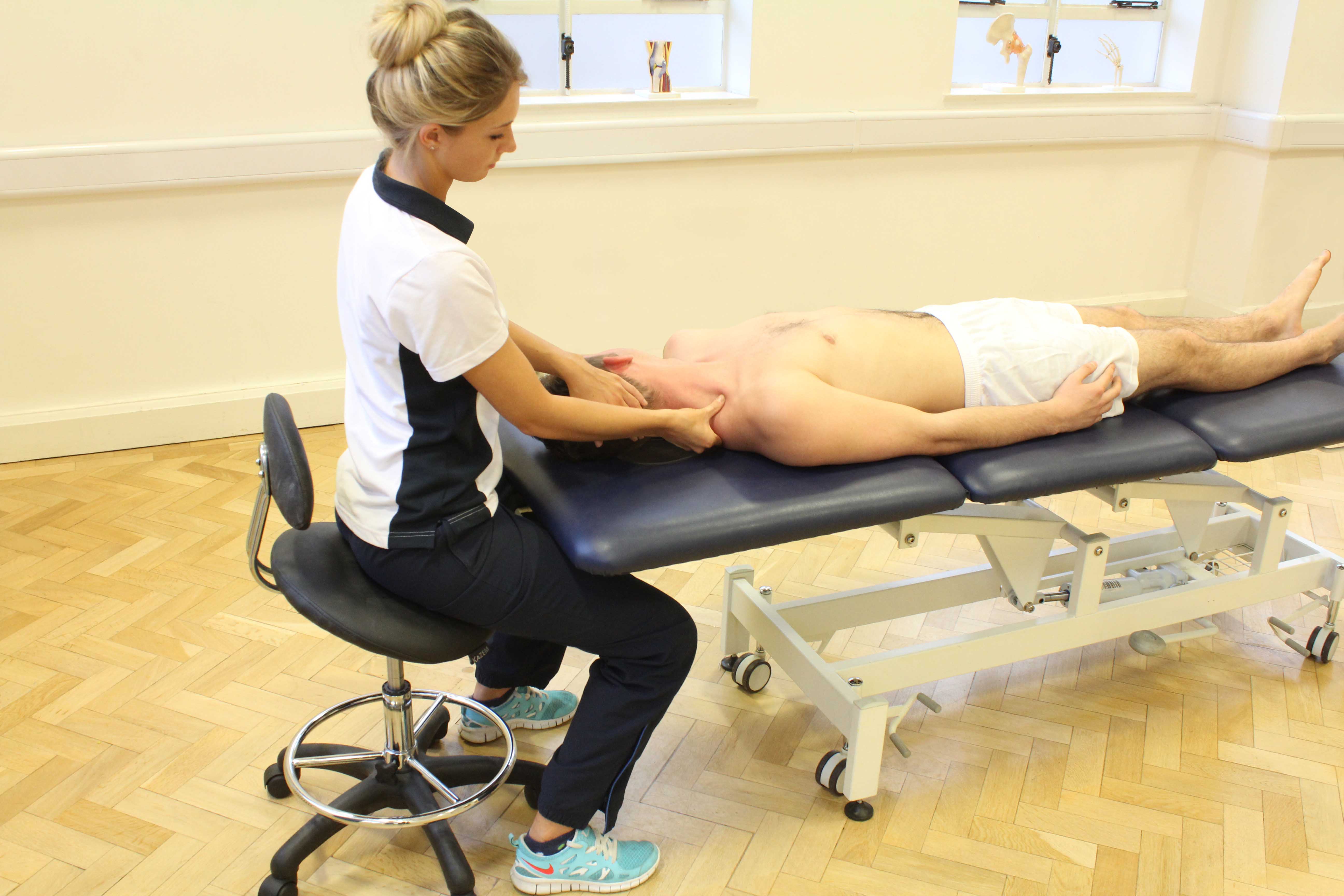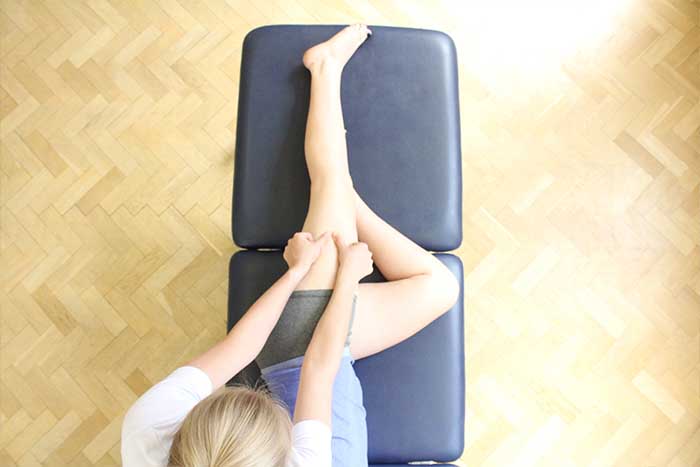Trigger pointing is an effective technique which is used to treat trigger points and muscular knots. Trigger pointing helps to decrease pain and relieve muscle tightness. Trigger points are formed in soft tissues. Acute trauma, overuse or repetitive microtrauma can lead to the development of stress on muscle fibres. This can lead to muscular knots, known as trigger points. Trigger pointing is the most effective treatment to inactive trigger points and it prompts relief of symptoms. Our massage therapists at Physio.co.uk can use trigger pointing as a useful technique to treat many conditions.
What is a trigger point?
A trigger point is also known as a muscular knot. A trigger point is an area of contracted muscle fibres that can be highly sensitive. Trigger points cause pain either into the local area or commonly into other areas of the body. Pain associated to trigger points can vary from sharp and intense to a dull ache. Trigger points affect the whole function of a muscle causing spasm and weakness. Trigger points form within soft tissues due to overuse, injury, an imbalance or post surgery.

What is trigger pointing?
Trigger pointing is a specific technique that is used to alleviate pain through isolated pressure and release. Trigger pointing is performed with therapist's thumbs or specific trigger pointing tools. Trigger pointing applies direct pressure onto trigger points. The trigger pointing technique breaks the cycle of pain which has built up and kept a muscle area contracted. Trigger pointing relaxes muscle fibres and increases circulation to an area.
When is trigger pointing used?
Trigger pointing is used to help in many circumstances. These circumstances include:
 Above: Trigger point massage on gastrocnemius
Above: Trigger point massage on gastrocnemiusTrigger pointing is used to help treat acute pain felt in the soft tissues. Acute pain can vary from mild pain that last for a moment or it can be apparent up to weeks and months. Acute pains do not last for more than 6 months. Trigger points are a common factor of acute aches and pains felt in the body. Trigger points can contribute to pains such as headaches, neck pain and back pain. Trigger points can cause pain directly where knots are located in the muscle and also send referred pain to other areas of the body. Trigger pointing massage technique helps relieve pain produced by trigger points. Trigger pointing directly stops blood flow to an area and causes cellular death. When pressure is released, cellular death is registered in the body and new oxygenated blood is brought to the area.
Trigger pointing is used to treat chronic pain. Chronic pain is defined as pain lasting longer that 3-6 months. Chronic pain can be caused by irritable trigger points in the muscles that cannot be relieved. Symptoms related to chronic pain can also be muscle weakness, tingling and stiffness. It is also often associated with sleep problems. Trigger pointing can help treat trigger points by breaking the cycle of pain. Trigger pointing helps break the vicious cycle that has kept a muscle contracted, it directly stretches the trigger points, knotted fibres and promotes relaxation. Trigger pointing also increases the circulation which is restricted by knotted fibres. The increase of circulation also enables oxygen and nutrients to be delivered to the area.
Trigger pointing also can help relieve tight muscles. Trigger points can cause localised tightness or a whole muscle group to tighten. Tight muscles can limit movement around a joint and can cause more pain. Trigger pointing can help relieve tightness by causing autogenic inhibition. Autogenic inhibition is the reflex response to excessive tension in the muscle fibres it supplies. When maximum contraction is applied, it is followed by maximal relaxation promoting a release of tightness and pain.
What are the physiological effects of trigger pointing?
Massage can produce many important physiological effects on the body. The physiological effects of trigger pointing include:
 Above: Trigger point massage on trapezius and anterior scalene muscles
Above: Trigger point massage on trapezius and anterior scalene musclesTrigger pointing stimulates the increase of blood circulation to an area. Trigger pointing increases blood to an area by applying pressure to a localised area which reduces oxygen in the cells. Restricted oxygen to cells causes cellular death. The body responds to cellular death by creating an inflammatory response. An inflammatory response dilates blood vessels, allowing an increase of blood to an area.
Trigger pointing also helps the removal of waste products in the muscles. Trigger pointing deliberately causes a blockage of blood by applying pressure onto the soft tissues. When pressure is released oxygenated blood is delivered into the muscles. Fresh blood supplies the necessary oxygen and helps affected tissues to heal. In the process of increased blood, waste products are flushed out. The removal of waste products in soft tissues can reduce muscular pain, tightness and fatigue.
Trigger pointing can help break down adhesions and scar tissue within the soft tissues. Adhesions and scar tissue are formed as part of the healing process. Adhesions and scar tissues are rigid and restrict movement. Trigger pointing increases blood circulation and increases temperature of the tissues. Increased temperature can relax the tissues and create more movement. Pressure from trigger pointing can break down the tissue fibres and help realign them into normal form.

What are the benefits of trigger pointing?
Trigger pointing has many benefits. The benefits of trigger pointing include:
Trigger pointing is a beneficial massage technique to help decrease pain. Trigger pointing relieves pain by interrupting the pain cycle. Pain can be caused by trauma or sudden exertion or can develop overtime due to muscle imbalance or posture. Pain causes muscle tightness and compression on to nerves and blood vessels, perpetuating the pain cycle. As muscle tightness increases, pain is also increased. The trigger pointing technique breaks the pain cycle by relieving tightness and returning the tone of the muscle back to normal.
Trigger pointing is beneficial to relieving tightness in the muscles. Tightness of muscles compresses blood vessels and nerves that run through muscles. When tightness is increased, blood vessels are restricted, reducing blood supply to surrounding areas. Trigger points are activated in certain points of the affected muscles. Trigger point involves treating points in the muscle to relieve tension. Trigger pointing increases temperature and blood flow through the muscles promoting relaxation. When muscles are relaxed they can be restored to its full length.
Trigger pointing helps restore movement and increase flexibility in the muscles. Improving range of movement is very important to enable the muscle to work to its full function. If muscles are tight and lack in movement, muscles fatigue and lead to aches and pains. Trigger pointing can help by relieving tightness and facilitating blood circulation. Increased range of movement enables full potential of the muscle and prevents any injuries from occurring.
Common body parts treated by trigger pointing
There are many common body parts that can be treated with trigger pointing. Common body parts treated by trigger pointing are:
Trigger pointing can also be performed on other areas of the body and be effective to reduce pain and break down adhesions.
Summary
Trigger pointing is one of the most effective techniques to help treat trigger points in the body. Trigger points are small areas of highly contracted muscle fibres that cause pain and stiffness within muscles. Trigger pointing is used to help treat acute/chronic pain and tight muscles. There are many physiological effects of trigger pointing which include increased blood circulation, the removal of waste products and the breakdown of fibrous tissue. There are many benefits of trigger pointing which are decreased pain, relieved tight muscles and increased range of movement. Trigger pointing can be performed on many areas of the body including shoulders, back, buttock, thigh and calf. Massage therapists at Physio.co.uk can use trigger pointing as an effective massage technique to treat a range.
How can I arrange a trigger pointing treatment?
The easiest way to arrange a trigger pointing treatment at Physio.co.uk is to email us at, office@physio.co.uk or call us on 0800 033 7800.
Alternatively if you have any questions please feel free to contact us.
We offer a 7 day service and provide home and clinic appointments.

 0330 088 7800
0330 088 7800


































